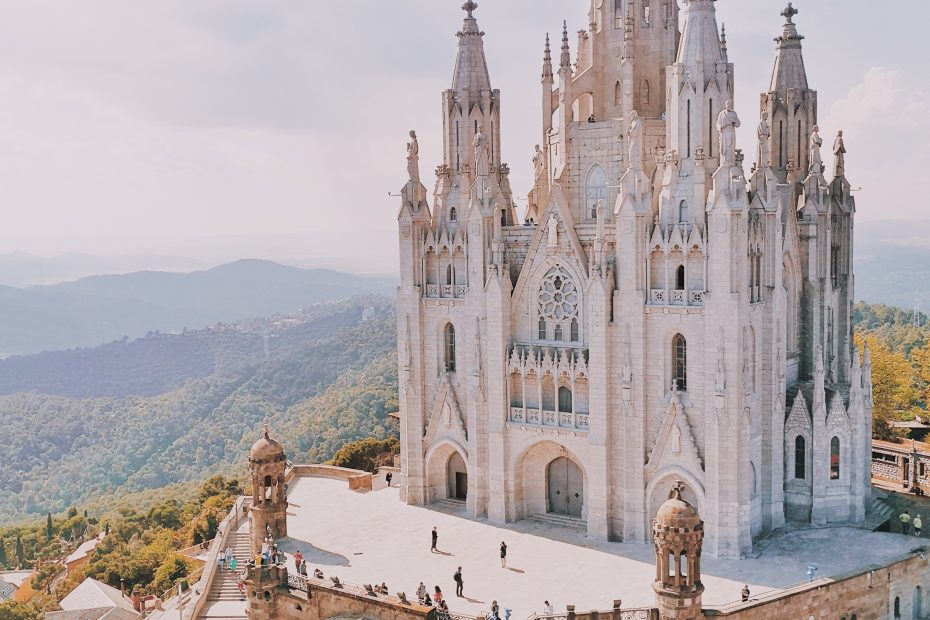Spain has a rich architectural history, with influences from the Romans, Visigoths, Moors, and beyond. Over centuries of cultural exchange, the Iberian Peninsula has nurtured a dazzling array of building styles. From the ornate Moorish palaces of Andalusia to the soaring Gothic cathedrals of the Middle Ages, Spain’s structures tell a vivid story of its past. In more recent times, Spain has continued to foster architectural creativity, from the spectacular creations of Antoni Gaudí to today’s bold contemporary projects. Join us as we traverse Spain to survey some of the world’s most impressive architecture.
Table of Contents
Architecture in Spain through the Ages
Spain’s architectural narrative begins with the ancient Romans, who brought sophisticated building techniques and infrastructure. Later, the Visigoths erected stone churches inspired by Roman forms. But it was the arrival of the Moors in AD 711 that most profoundly shaped Spanish design. The new Islamic rulers built splendid palaces and mosques, adorning them with intricate geometrical and botanical motifs. This Moorish style reached its apex in the magnificent Alhambra palace in Granada.
As Christian kingdoms gradually reconquered Spain between the 8th and 15th centuries, they developed their own signature architecture called Mudéjar. Blending Islamic and Gothic elements, Mudéjar buildings feature carved wood ceilings, glazed tiles, and brickwork arches. Elaborate Gothic cathedrals also arose across Spain during the Middle Ages, including Burgos Cathedral and Toledo Cathedral.
Renaissance and Baroque Trends
The Renaissance brought ornate new stylistic trends to 16th-century Spain. The Plateresque style combined decorative Islamic elements with Italian Renaissance forms. Phillip II employed this style when building the immense palace and monastery of El Escorial. Later, over-the-top Spanish Baroque architecture emerged, replete with gilded decor and elaborate facades. Exuberant examples can be seen in the Plaza Mayor square in Madrid and Murcia’s Cathedral.
Modernisme and 20th Century Architecture
By the late 1800s, visionary Catalan architect Antoni Gaudí was forging his own highly imaginative style, Modernisme. His fantastical buildings such as Park Güell and the still-unfinished La Sagrada Familia basilica became Barcelona icons. Also left unfinished at Gaudí’s death was his Casa Milà apartment building, with its wavy stone facade and surreal roofscape.
Rationalism and modernism then took center stage in 20th-century Spanish architecture. Striking modern buildings include Madrid’s Edificio Telefónica by Ignacio de Cárdenas Pastor and Barcelona’s Agbar Tower by Jean Nouvel. More recently, thrilling contemporary projects have emerged, often through creative redevelopment schemes. Valencia’s City of Arts and Sciences by Santiago Calatrava is a prime example.
Marvels of Spanish Architecture
From the Court of the Lions at the Alhambra to the Segrada Familia’s fantastical spires, certain Spanish buildings stand out as absolute masterpieces. Gaudí’s one-of-a-kind Sagrada Familia has become Spain’s most-visited monument, mesmerizing with its otherworldly towers modeled on religious symbolism. Equally remarkable is the Alhambra, whose intimate Moorish pools, fountains, and boasting stunning views over Granada.
Two of Spain’s most acclaimed modern structures are the Guggenheim Museum Bilbao by Frank Gehry and the City of Arts and Sciences in Valencia by Santiago Calatrava. With its titanium curves glinting on the Nervión River, the Guggenheim put Bilbao on the architectural map and exemplifies the head-turning originality of contemporary Spanish design. Calatrava’s futuristic white compound in Valencia also exhibits eye-catching flair with its fluid lines and visual audacity.
Must-See Architectural Hotspots
Certain Spanish cities boast such a wealth of superb architecture that they are essential stops on any design tour. Barcelona stands out for its diverse array of styles, from Gaudí’s surreal Sagrada Familia to Jean Nouvel’s cucumber-shaped Torre Agbar. The Modernisme works of Gaudí, Domènech i Montaner, and Puig i Cadafalch make Barcelona one of Europe’s most enchanting architectural locales.
Equally rich is Granada, where the magnificent Alhambra floats above the city like an exotic mirage, complemented by the lavish Moorish patios of the Albayzín district. Seville also impresses with its immense Gothic cathedral and the ornate Mudéjar architecture of the Alcázar palace complex. In Madrid, visitors can admire Habsburg-era Baroque gems alongside cutting-edge contemporary projects.
Conclusion
Throughout history, Spain’s architecture has evolved through periods of cross-cultural exchange, artistic innovation, and bold experimentation. The dazzling diversity of styles across Spain reflects its complex past and dynamic present. From the Alhambra’s seductive ornamentation to Gaudí’s surreal genius, Spanish architecture enthralls with its originality and sheer visual splendor. Looking ahead, Spain promises even more captivating design wonders as its architectural ingenuity continues.
FAQs
What are the major architectural styles in Spain?
The major Spanish architectural styles include Moorish, Mudéjar, Gothic, Plateresque, Baroque, Modernisme, Rationalist, and contemporary architecture.
Where is Moorish architecture found in Spain?
Moorish architecture is most prominent in Andalusia, especially at the spectacular Alhambra complex in Granada. Other examples can be found in Córdoba, Seville, and Cádiz.
Who is the most famous Spanish architect?
The most acclaimed Spanish architect is Antoni Gaudí, whose radically creative Modernisme buildings dominate Barcelona. These include the Sagrada Familia, Park Güell, Casa Batlló, and Casa Milà.
What are some top examples of modern architecture in Spain?
Notable modern Spanish architecture includes the Guggenheim Museum Bilbao by Frank Gehry, the City of Arts and Sciences in Valencia by Santiago Calatrava, and the Torre Agbar skyscraper in Barcelona by Jean Nouvel.
What makes Spanish architecture so unique?
The originality of Spanish architecture stems from the country’s diverse cultural influences, its long tradition of bold experimentation and innovation, and architects like Gaudí who pushed creative boundaries.
